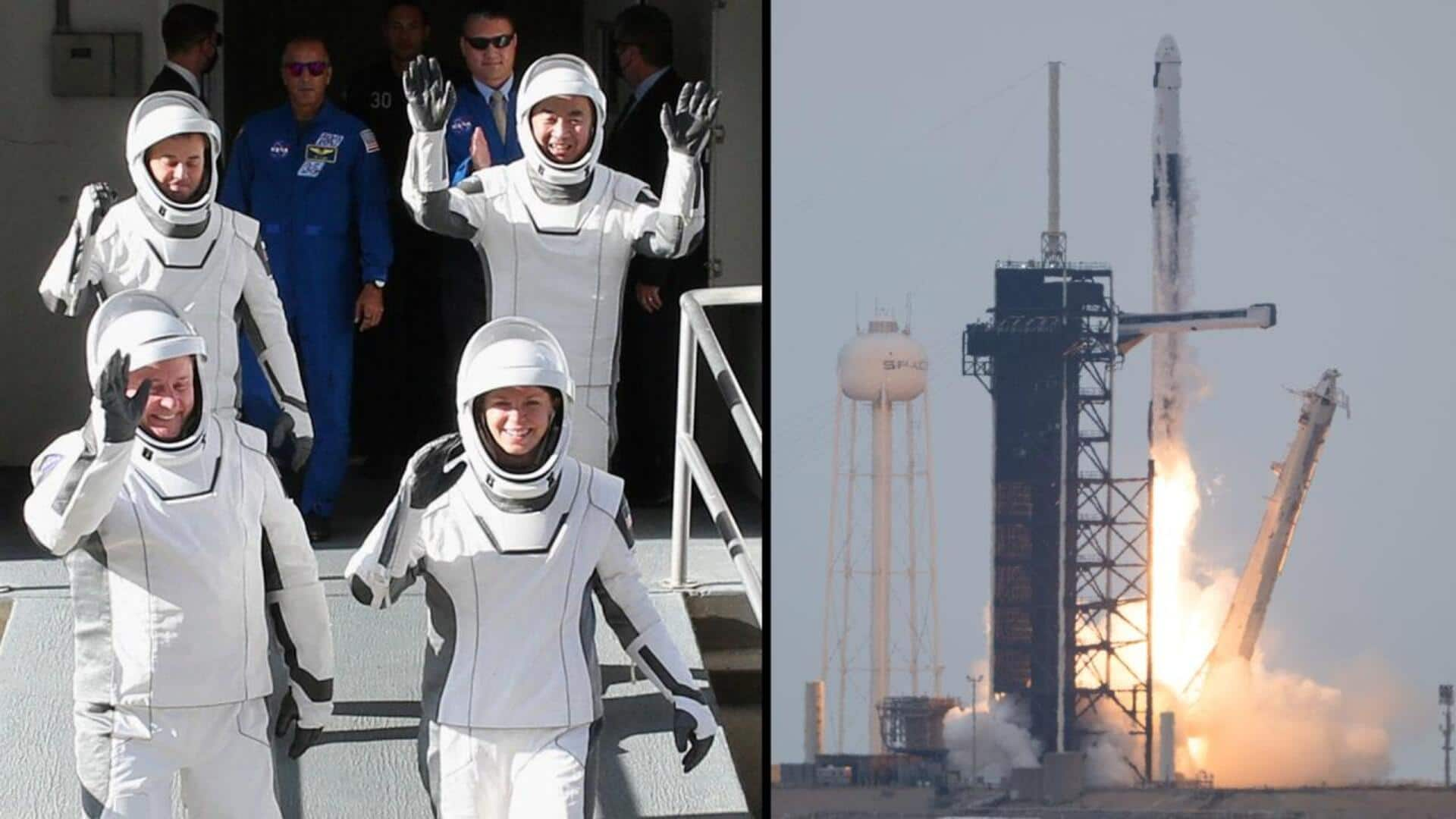
NASA's Crew-11 docks with ISS: Why it matters, what's next?
What's the story
NASA and SpaceX successfully launched their latest science mission, Crew-11, sending four astronauts to the International Space Station (ISS). They blasted off aboard SpaceX's Crew Dragon capsule, Endeavour, atop a Falcon 9 rocket from NASA's Kennedy Space Center in Florida at 11:43am EDT (9:13pm IST) on Friday. The Crew-11 mission reached its destination at 2:27am EDT (11:57am IST) on Saturday, when the SpaceX Dragon spacecraft docked with the ISS.
Docking details
Take a look at the crew members
The Crew-11 mission is part of NASA's Commercial Crew Program and carries four astronauts from three space agencies. It comprises NASA astronauts Zena Cardman and Mike Fincke, Japanese astronaut Kimiya Yui, and Russian cosmonaut Oleg Platonov. After docking, standard leak checks and pressurization between the spacecraft and station were conducted in preparation for hatch opening, according to NASA.
Twitter Post
Crew-11 was welcomed by Expedition 73 crew
The Expedition 73 crew welcomes @NASA's @SpaceX #Crew11 mission aboard the station. pic.twitter.com/mJLFrghAER
— International Space Station (@Space_Station) August 2, 2025
Mission goals
The Artemis program
The primary objective of the Crew-11 mission is to send a four-person team to the ISS for an extended stay. During their six-month mission, the astronauts will participate in simulations that mimic landing near the Moon's South Pole. This is a key part of preparations for NASA's Artemis program, which aims to return humans to the lunar surface.
Research platform
ISS's operational timeline and decommissioning plans
The ISS, which has been hosting astronauts since 2000, plays a crucial role in research supporting long-term space exploration. It serves as a testing ground where scientists can study the effects of space on human health and new technologies. The station is expected to remain operational until around 2030, after which it will be gradually deorbited and break apart over a remote area of the Pacific Ocean known as Point Nemo, a location often referred to as the "spacecraft graveyard."
Research project
Crew-11 mission's unique contribution to space research
Along with their scheduled tasks, the Crew-11 mission has also brought Armenian pomegranate seeds. These will be compared with seeds kept on Earth to study how growing food in space might differ in microgravity. This is a step toward making long-term space travel more sustainable. The Endeavour spacecraft, which has flown before, is on its fifth mission after supporting four NASA flights and one private mission.